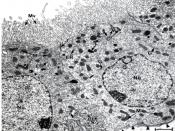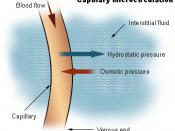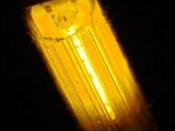Fluid and Electrolytes
Homeostasis
t State of equilibrium in internal environment of body, naturally maintained by adaptive responses that promote healthy survival
t Body fluids and electrolytes play an important role
Water Content of the Body
t Accounts for 60% of body weight in adult
t 70-80% of body weight in infant
t Varies with gender, body mass, and age
Compartments
t Intracellular fluid (ICF)
t Extracellular fluid (ECF)
l Intravascular (plasma)
l Interstitial
t Transcellular
Intracellular Fluid (ICF)
t Fluid located within cells
t 42% of body weight
t Most prevalent cation is potassium (K+)
t Most prevalent anion is phosphate (PO4-)
Extracellular Fluid (ECF)
t Fluid spaces between cells (interstitial fluid) and the plasma space
t Interstitial
l Most prevalent anion is chloride (Cl-)
l Most prevalent cation is sodium (Na+)
l Expands and contracts
l 2/3 of ECF in interstitium
t Intravascular (IV)
l Within vascular space
l Measured with blood tests
l 1/3 of ECF
Transcellular Fluid
t Small but important fluid compartment
t Approximately 1L
t Includes fluid in
l Cerebrospinal fluid
l Gastrointestinal (GI) tract
l Pleural spaces
l Synovial spaces
l Peritoneal fluid spaces
Mechanisms Controlling Fluid and Electrolyte Movement
t Diffusion
o Movement of molecules from an area of high concentration to low concentration
o Occurs in liquids, solids, and gases
o Membrane separating two areas must be permeable to substance for diffusion to occur
t Facilitated diffusion
t Very similar to diffusion
t Specific carrier molecules involved to accelerate diffusion
t Active transport
o Process in which molecules move against concentration gradient
o Example: sodium-potassium pump
o ATP is energy source
t Osmosis
t Movement of water between two compartments by a membrane permeable to water but not to a solute
t Water moves from area of low solute concentration to...


